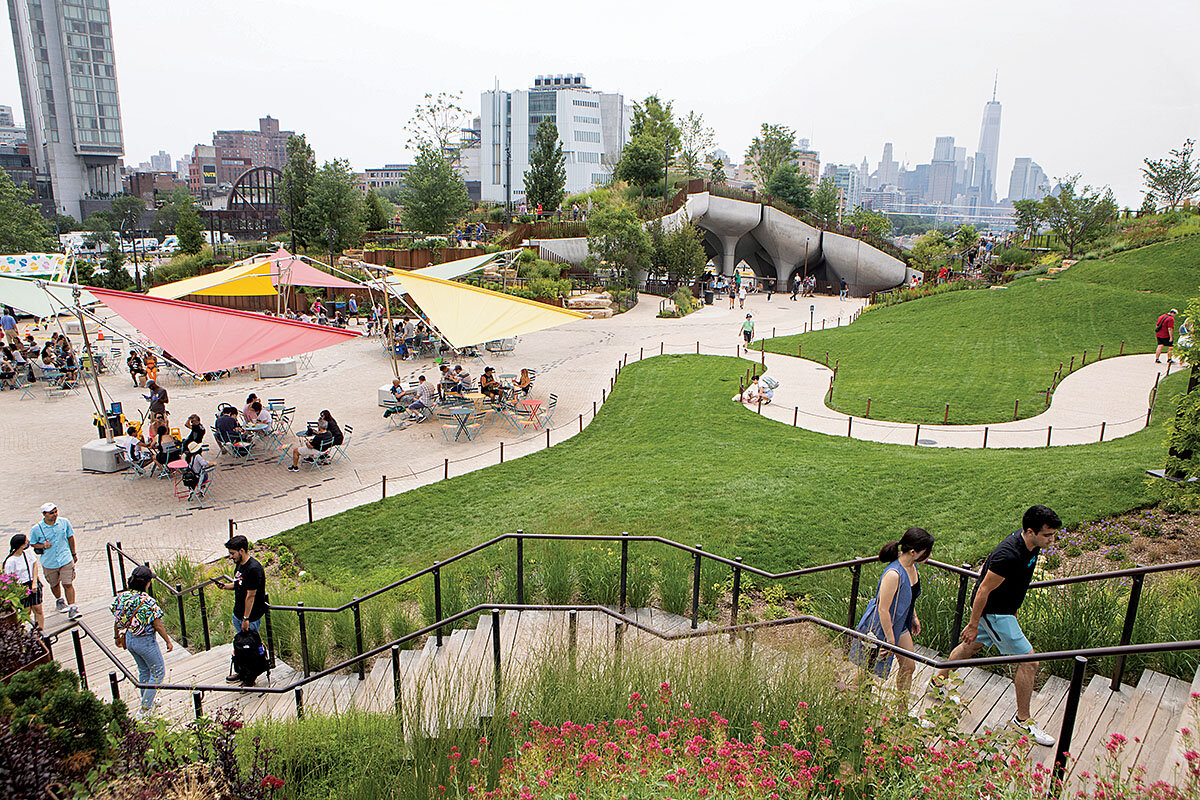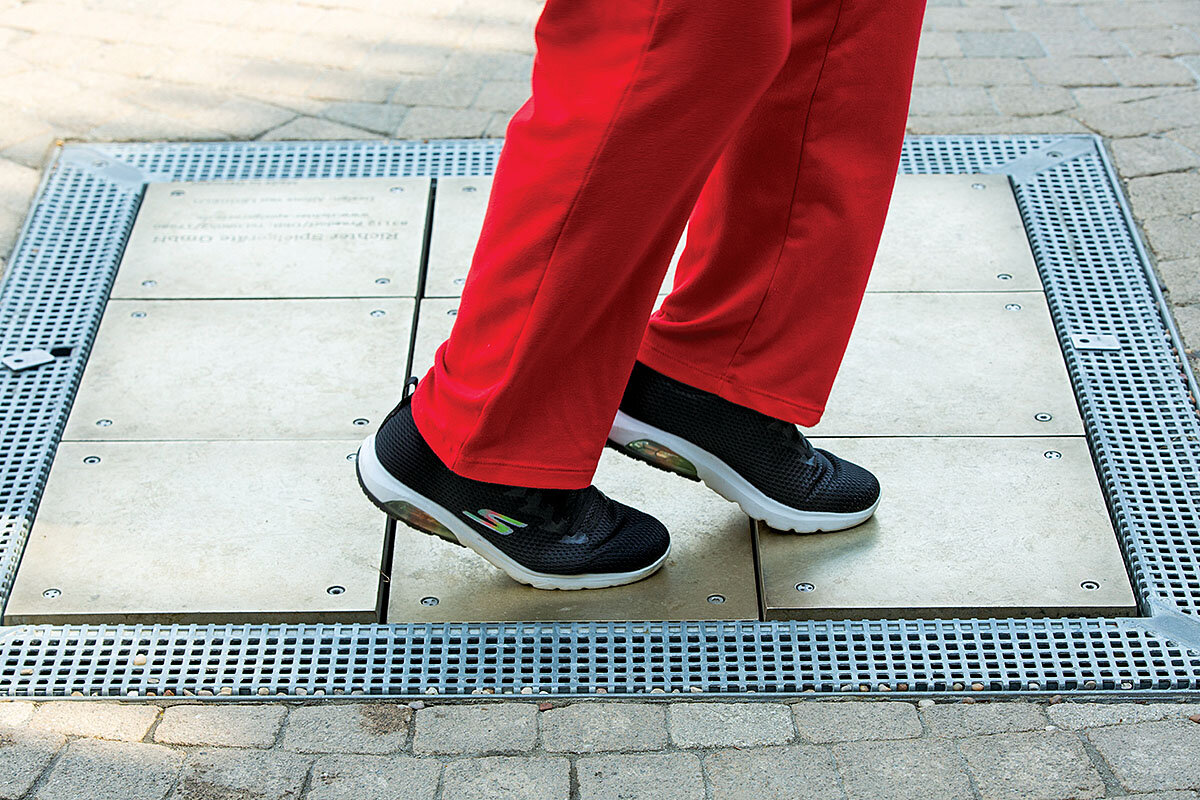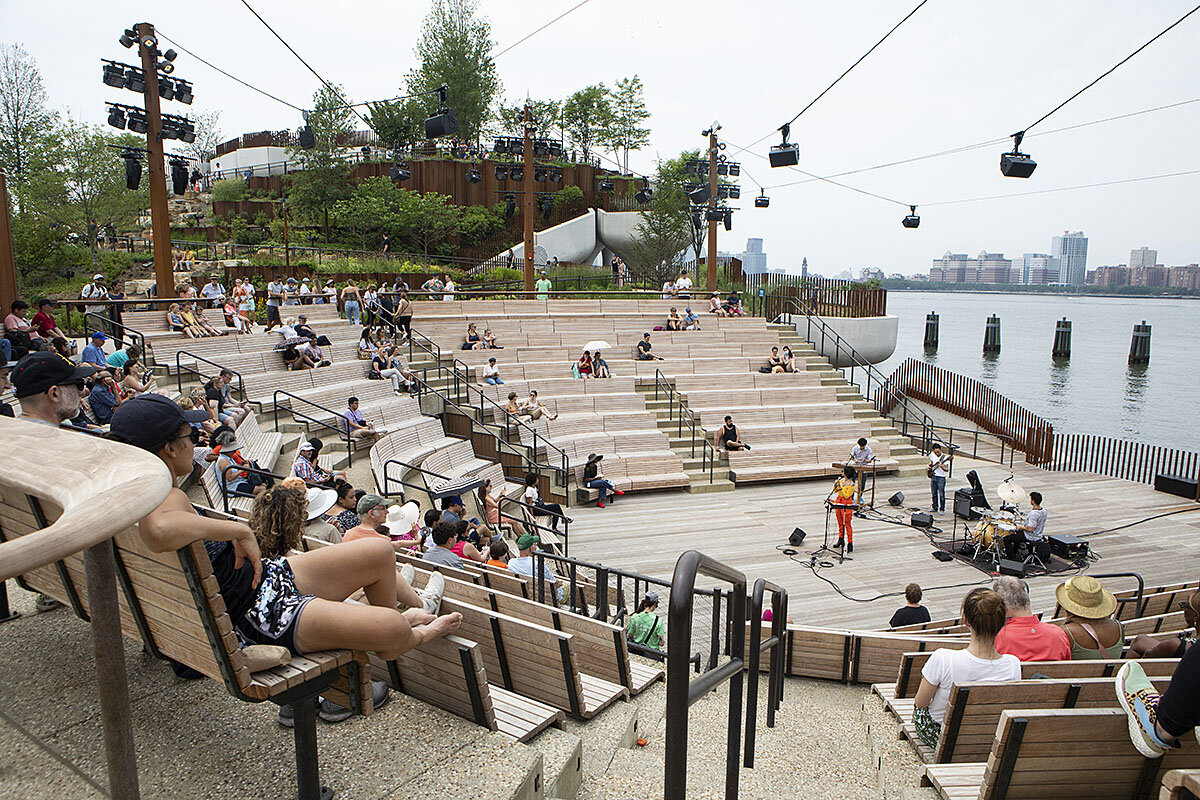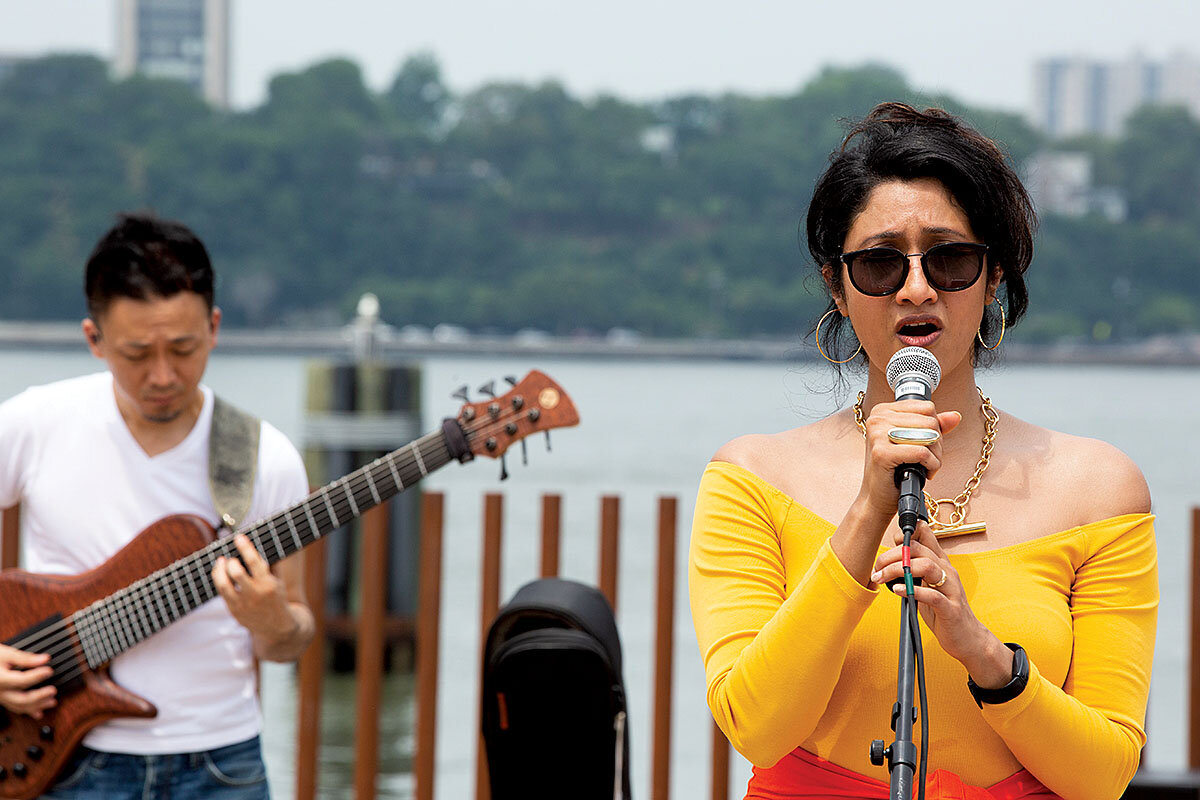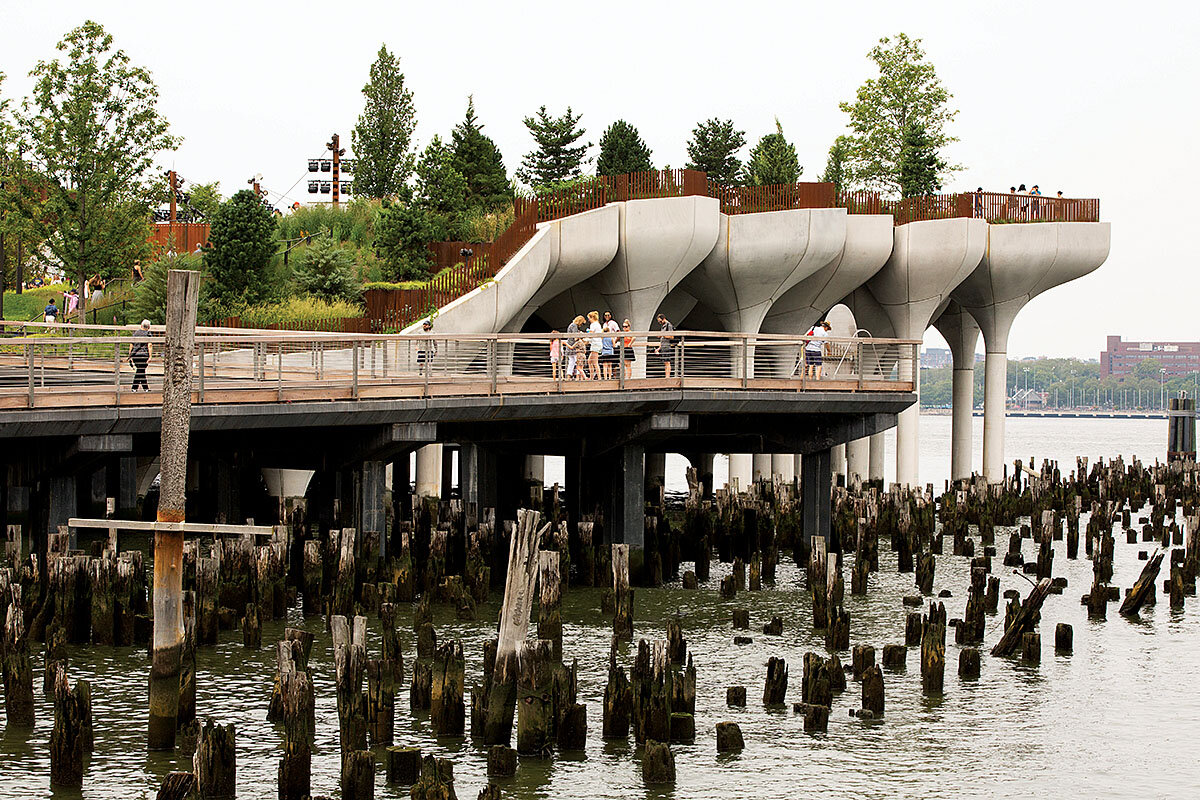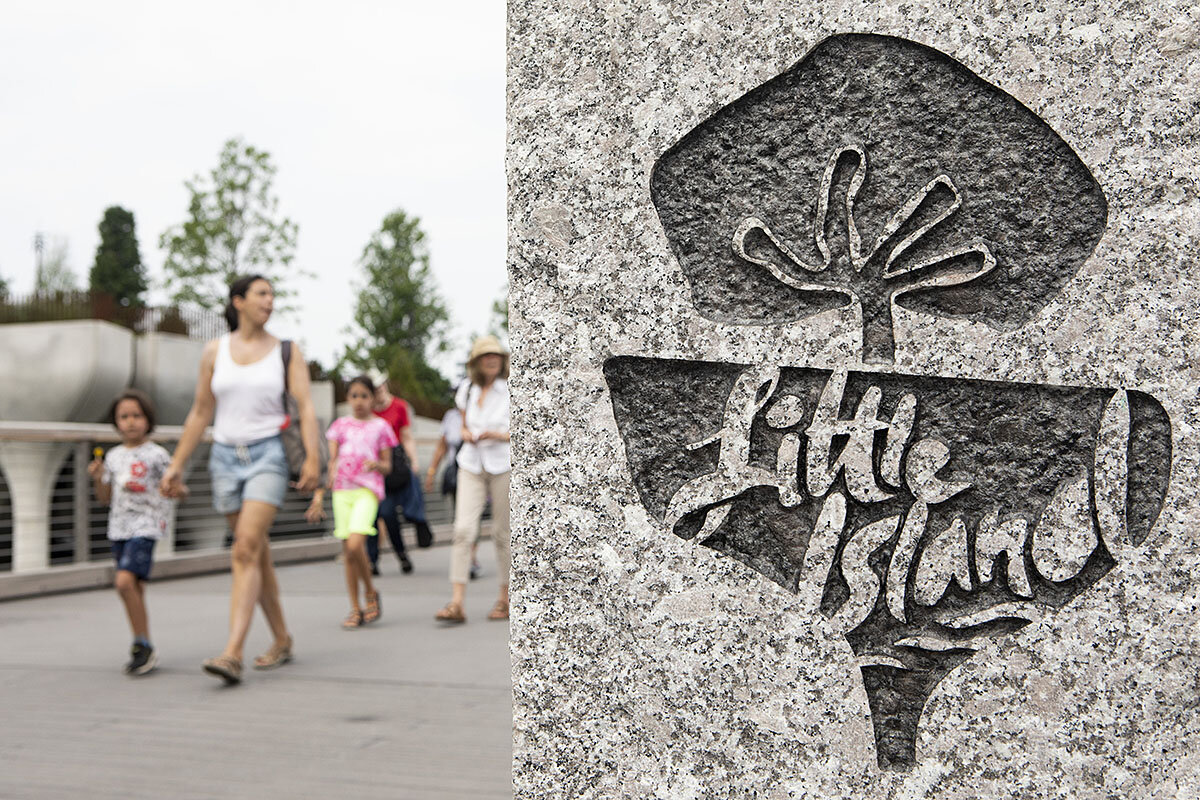From wrecked pier to public park: Exploring New York’s Little Island
Loading...
| New York
A new Gotham green space hovers above the Hudson River. Open since May, Little Island boasts selfie-worthy views of the jagged Manhattan skyline. The addition to Hudson River Park leads guests up a gangplank to a space – upheld by tulip-shaped concrete columns – where they can traipse short trails, enjoy live performances, and picnic on a grassy slope. The city is inseparable from the human-made oasis, as chatter blends with the muffled roar of the West Side Highway.
Private money props up the public park. Developed over a decade, Little Island was mostly funded by the family foundation of media mogul Barry Diller and fashion designer Diane von Furstenberg. (The couple’s philanthropy also supports the nearby High Line, an elevated park.) Mr. Diller conceived of Little Island, whose structure was designed by Heatherwick Studio in London. New York-based MNLA designed the landscape, which rises above the remains of a hurricane-wrecked pier.
Currently, visitors to the park, which is free, must make timed-entry reservations from midday onward to help curb crowds. With 2.4 acres to explore, there’s not much space for solitude. But the petite park offers something pandemic-weary New Yorkers might crave even more: whimsy. “For me, if you walk up that bridge and you leave New York behind, and you enter our little Oz, and it brings you pleasure, it was all worthwhile,” Mr. Diller told The Wall Street Journal.
Waist-high blooms abound. Square tiles tinkle like bells when tapped by feet. One June afternoon a boy rolls down the slope, his shirt picking up loose strands of grass.
Little Island is open daily from 6 a.m. to 1 a.m. Free, timed-entry reservations are required from noon onward.





